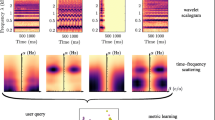Abstract
Orchestral blend happens when sounds coming from two or more instruments are perceived as a single sonic stream. Several studies have suggested that different musical properties contribute to create such an effect. We developed models to identify orchestral blend effects from symbolic information taken from scores based on calculations related to three musical parameters, namely onset synchrony, pitch harmonicity, and parallelism in pitch and dynamics. In order to evaluate the performance of the models, we applied them to different orchestral pieces and compared the outputs with human experts’ ratings available in the Orchestration Analysis and Research Database (Orchard). Using different thresholds for the three parameters under consideration, the models were able to successfully retrieve 81% of the instruments involved in an orchestral blend on average. These results suggest that symbolic representation of music conveys perceptual information. However, further developments including audio analyses to take into account timbral properties could alleviate some of the current limitations.
Access this chapter
Tax calculation will be finalised at checkout
Purchases are for personal use only
Similar content being viewed by others
References
Berlioz, H.: Grand Traité d’Instrumentation et d’Orchestration Modernes. Henry Lemoine, Paris, France (1844)
Blatter, A.: Instrumentation and Orchestration, 2nd edn. Schirmer Books, New York (1997)
Bregman, A.S.: Auditory Scene Analysis: The Perceptual Organization of Sound. MIT Press, Cambridge (1990)
Bregman, A.S., Pinker, S.: Auditory streaming and the building of timbre. Canadian J. Psychol./Revue Canadienne de Psychologie 32(1), 19 (1978)
Goodchild, M., McAdams, S.: Perceptual processes in orchestration. In: Dolan, E.I., Rehding, A. (eds.) The Oxford Handbook of Timbre. Oxford University Press, New York (2018)
Kendall, R.A., Carterette, E.C.: Identification and blend of timbres as a basis for orchestration. Contemp. Music Rev. 9(1–2), 51–67 (1993). https://doi.org/10.1080/07494469300640341
Lembke, S.A.: When timbre blends musically: perception and acoustics underlying orchestration and performance. Ph.D. thesis, McGill University, Montreal, QC, Canada (2014)
Lembke, S.A., Parker, K., Narmour, E., McAdams, S.: Acoustical correlates of perceptual blend in timbre dyads and triads. Musicae Scientiae 23, 1–25 (2017). https://doi.org/10.1177/1029864917731806
McAdams, S.: The auditory image: a metaphor for musical and psychological research on auditory organization. In: Crozier, W.R., Chapman, A.J. (eds.) Cognitive Processes in the Perception of the Art, pp. 289–323. Elsevier, North-Holland (1984)
McAdams, S.: Musical timbre perception. In: Deutsch, D. (ed.) The Psychology of Music, 3 edn., pp. 35–67. Academic Press, San Diego (2013)
McAdams, S., Bregman, A.S.: Hearing musical streams. Comput. Music J. 3(4), 26–43 (1979)
Piston, W.: Orchestration. WW Norton, New York (1955)
Rimsky-Korsakov, N.: Principles of Orchestration, 1st edn. Dover Publications, New York (1964)
Sandell, G.J.: Concurrent timbres in orchestration: a perceptual study of factors determining “blend”. Ph.D. thesis, Northwestern University, Evanston, Illinois, United States of America (1991)
Sandell, G.J.: Roles for spectral centroid and other factors in determining “blended” instrument pairings in orchestration. Music Percept. 13(2), 209–246 (1995). https://doi.org/10.2307/40285694
Wang, D., Brown, G.J. (eds.): Computational Auditory Scene Analysis: Principles, Algorithms and Applications. Wiley-IEEE Press, New York (2006)
Acknowledgments
This research is supported by a NSERC SPG-P/507004-17 research grant.
Author information
Authors and Affiliations
Corresponding author
Editor information
Editors and Affiliations
Rights and permissions
Copyright information
© 2021 Springer Nature Switzerland AG
About this paper
Cite this paper
Antoine, A., Depalle, P., Macnab-Séguin, P., McAdams, S. (2021). Modeling Human Experts’ Identification of Orchestral Blends Using Symbolic Information. In: Kronland-Martinet, R., Ystad, S., Aramaki, M. (eds) Perception, Representations, Image, Sound, Music. CMMR 2019. Lecture Notes in Computer Science(), vol 12631. Springer, Cham. https://doi.org/10.1007/978-3-030-70210-6_24
Download citation
DOI: https://doi.org/10.1007/978-3-030-70210-6_24
Published:
Publisher Name: Springer, Cham
Print ISBN: 978-3-030-70209-0
Online ISBN: 978-3-030-70210-6
eBook Packages: Computer ScienceComputer Science (R0)




